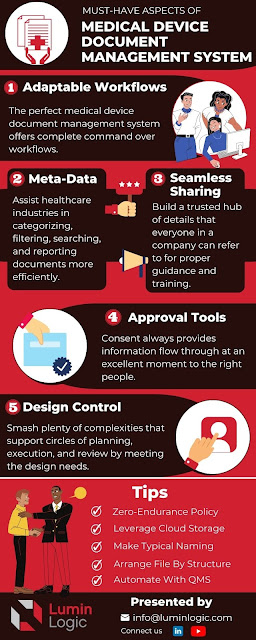Understanding the ISO Quality Management System
Many medical devices manufacturing deem QMS as an adversary for their operations, as they have in order to be compliant. However, ensuring an ideal quality management system could pose numerous benefits. It is a set of procedures and policies that companies implement to design, develop, and manufacture their products. In that sense, ISO 13485 quality management system is a widely used standard in medical devices. Implementing this approach allows manufacturers to regulate the safety and integrity of products as per every international regulation.
Basic requirements
The ISO 13485 quality system is categorized into eight sections of requirements. It is applicable to every design regardless of its type or size. The first three sectors are merely introductory, so companies should focus on other remaining ones.
• QMS
This fourth section implies general requirements, as well as standards about manual, documentation control, records arrangement, and other essentials.
• Management responsibility
It covers the top necessities required for implementation and maintenance. Along with initial schemes, it helps to engage in ongoing reviews for consumer satisfaction and improvement.
• Resources
This section is crucial for controlling all necessary resources like laborer force, buildings, infrastructure, and operational environment.
• Product realization
It deals with all aspects of creating a contrivance or its service. Technicians work with reviews, purchasing, crating, servicing equipment. However, this section doesn’t apply to companies without any services for designs.
Documentation needs
Similar to other operations, documenting processes, events, and workflows are extremely crucial, as it serves as objective evidence. It demonstrates that the regulations are being followed and implemented at every step.
Quality manual
For ISO 13485, manufacturers need a lengthy policy that breaks down every requirement of standard sections. Hence, a manual includes these criteria:
• Scope of a QMS including any clauses supported with non-applicable justifications.
• References or lists of comprised procedures.
• Interactions of each process.
• A general outline of QMS documentation.
Medical device file
The contents of this paperwork include:
• Each product’s description, along with its intended use.
• Labeling and instructions for utilization.
• Specifications for inspection, labeling, packaging, storing, distribution, and handling.
• Details about measuring and monitoring.
Control of records
These are documents that serve as a record for the following processes. Throughout this note, technicians will add notes related to each process, along with its review and approval details.
Final note
As discussed, this systems consist of various processes and procedures of critical significance to every medical device industry.




Comments
Post a Comment